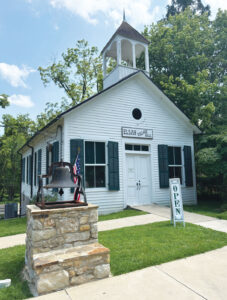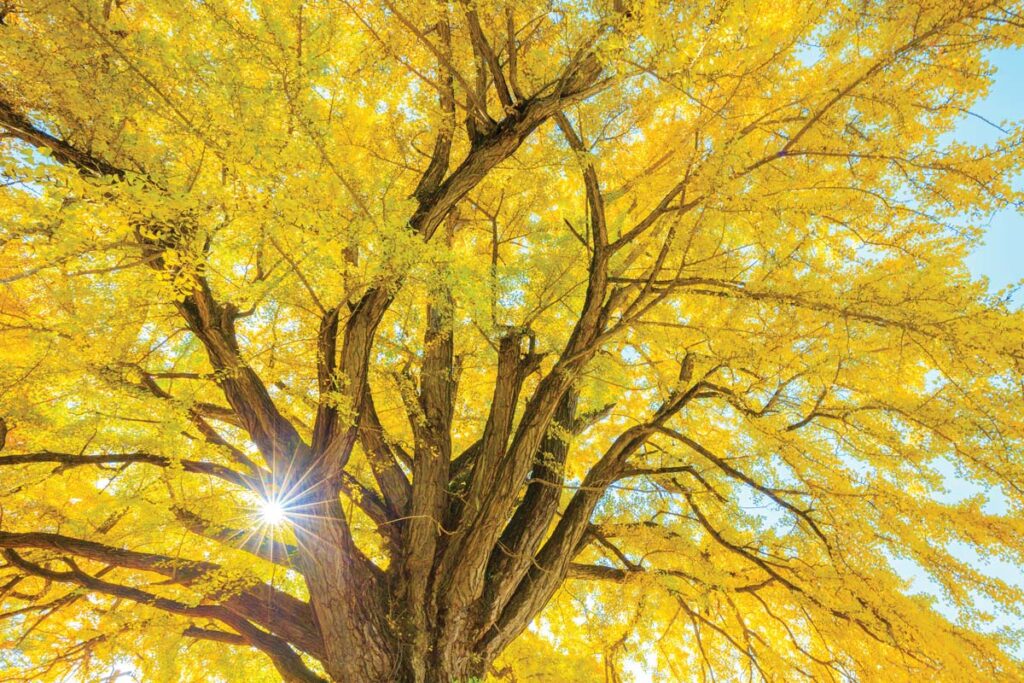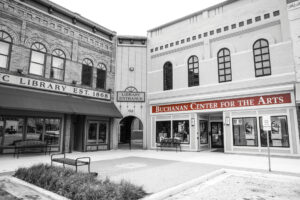
Driving along the Great River Road north of Alton, with the Mississippi River flowing less than 50 feet from the highway, it is easy to miss the road leading into Elsah. Nestled in a narrow valley with imposing limestone cliffs on either side and hidden by a thick canopy of trees, the tiny community of 100 residents is often referred to as “the town that time forgot.”
But, for those who venture into the village, the storybook setting they discover makes an indelible impression that, in fact, is never forgotten.
Much of the reason for Elsah’s charming appearance is a multitude of stone homes and public buildings, which have outwardly changed little since the founding of the town by James Semple 171 years ago. Semple owned the land and offered free residential lots for anyone who would build a house out of stone he supplied from his quarry.
Elsah’s charm is easy to appreciate on a self-guided walk along the two short main streets. In addition to the mid-1800s stone homes, there is an eclectic mix of late-1800s architecture, including Greek Revival, Gothic Revival, Mansard, Italianate and Saltbox homes. The stories of each home, other historic buildings, town memorabilia and historic photographs are exhibited in the 1887 Elsah Village Hall, which is also home to the Historic Elsah Foundation.
Elsah residents Steve and Cindy Hall are examples of local homeowners who have lovingly directed their attention to maintaining the pristine condition of the community’s historic buildings. In fact, the Halls consider themselves as caretakers more than owners.

Originally, their 1857 home was built as the parsonage in anticipation of building a Methodist Church, which was finally constructed in 1874 across the street where it stands today and is used weekly for services. For the 17 years before the church opened, the Hall’s living room was used for weddings, funerals and other church business.
The Halls had been frequent visitors to Elsah, and in fall 2022, they were enjoying a picnic in the park in front of the church while admiring what would become their home. “We were daydreaming what it would be like to live there, and Cindy decided there was nothing to lose by inquiring if the owners were interested in selling, [so] she ventured over to ask,” Steve recalls.
“They told us they would keep our number,” Cindy says. “We think they just wanted to be sure we would be the right owners and respect the home as they did. Six weeks later they sold it to us.”
Blair Smith and his wife are another couple who always admired the quaint village. Returning to their St. Louis home from a weekend drive in the Illinois countryside in 2003, they decided to take a route through the village and noticed a for sale sign on a residence.
“It had been built as a tavern in 1877, and a home had been added alongside,” Blair says. “We thought it would make a great weekend retreat.” Then, as the Smiths painted walls and refinished floors on weekends, they realized they enjoyed the village so much they eventually made it their permanent home.

Ten years later, in 2014, they decided to open a general store in the room that had been the tavern, which includes the original countertops, floor and ceiling. Today, while the one-room store supplies staples for residents, it also offers specialized goods that have a history of their own and adds an unexpected experience for visitors to the village.
“For example, we have 50 flavors of soda in glass bottles, several made by an Illinois bottler in business since 1936 that uses the original formulas, and fresh breads from a bakery doing business since 1902,” Blair says, mentioning just some of the items for sale that make the one-room store so unique.
“When people visit historic Elsah, they remark they had always heard about [it] and wanted to visit, and that our general store is exactly what they hoped to find,” Blair says.
Because of its history and pristine character, in 1973, Elsah was the first village in the U.S. to be recognized in its entirety as a Historic District when 48 buildings were added to the National Register of Historic Places.
In addition, a second National Historic Landmark awaits discovery inside Elsah’s town limits, just a mile away. Perched several hundred feet on top of the bluff overlooking the village is the unique campus of Principia College, a private liberal arts institution founded in 1912.
In 1923, architect Bernard Ralph Maybeck was tasked to develop a master plan for the institution’s new campus. He did so, designing the first 11 buildings to appear as a Tudor village, as if in the English countryside. Featuring steeply pitched gable roofs, elegant masonry and stonework, and wooden beams set in a stucco or stone facade, construction was completed in 1935.

A self-directed driving tour through the village passes the “mistake house.” Prior to building the campus, the cottage-like structure was designed by Maybeck to demonstrate the kinds of construction techniques to be used in the “village.” Without a uniform architectural appearance, the tiny cottage indeed looks like a mistake, but was an invaluable three-dimensional blueprint for the construction workers.
As the new campus was being erected, the student body requested the campus chapel be American Colonial in style. After studying meeting houses and churches in Massachusetts, Maybeck designed a spectacular white limestone church erected on the high point on campus, which he described as the “climax of Colonial Church art.”
For more information about the town that time forgot, visit escapetoelsah.com. Discover nearby area attractions, places to stay and plan for the community’s upcoming events. The Village of Elsah Fall Festival will be held Sept. 28 and will feature various activities, music, food and tours of the community. Later in the year, Elsah’s annual Home for the Holidays House Tour will occur on Dec. 7 and will include eight historic homes and 12 public buildings that will be open and decorated for the holidays.








